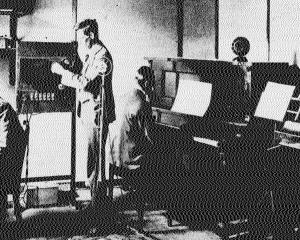To put it crudely, this is the inevitable result of the crime and punishment auction that successive governments have indulged in to boost their popularity and their electoral prospects - all at our behest. It is also a dismal collective failure of imagination.
No-one could accuse the previous Labour-led governments of sitting on their hands in this respect. They went on a prison-building spree and opened four new prisons in the space of five years.
Despite this, it has been predicted that cell space will run out in about February next year unless radical expansion steps are taken.
Hence the hullabaloo over Corrections Minister Judith Collins' proposal to set prisoners to work helping to convert old shipping containers to portable cells.
Fully fitted out, plumbed-in and located within the security nexus of a corrections facility, each "bed" within such an arrangement would cost in the region of $380,000, rather than the more conventional $630,000. Quite a saving, you might say.
But you might also say that $380,000 is the cost of a couple of tidy, new three to four-bedroom state houses, or umpteen dozen medical procedures not currently performed because there are no funds for them; it is the price of a far-reaching programme on domestic violence, or child abuse; it is the tariff of numerous educational interventions for underprivileged children who, benefiting from such, might just avoid adding to our hopeless prison statistics.
Speaking of statistics, let's have a look at them, because the whole debate over shipping containers is missing the point.
When it comes to imprisonment rates, we can hold our heads high in the international arena. We are truly up there with the greats. Only the United States beats us when it comes to jailing offenders.
In June 2006, we were imprisoning people at a rate of 180 per 100,000 people, running ragged the closest following contender, Great Britain, at a mere 139. Following forlornly in the wake are the likes of Canada, Scotland and Australia - not to mention the positively wimpish Scandinavian countries who manage a muster typically about half of ours.
Yep, we're world beaters. We're well out in front with our recidivism rates, too.
We soar above Australian states such as South Australia, for instance. The Corrections Department's figures for 1999-2000 show the percentage of prisoners reconvicted within two years of release was 57%. In South Australia, that percentage was about 30.
More recent figures show similar outcomes. For the years 2004-6, the reconviction rates in this country were 56.4% and the reimprisonment rates 39.2%
In 2003, New Zealand had a prison population of about 6000. Today it is about 8500. By 2016, it is predicted by Corrections to rise to about 11,000. So, if we carry on the way we are going, in 13 years we will have almost doubled our population of prisoners and, it stands to reason, we will need double the prison capacity.
In 2005-06, Corrections estimated that the cost per day of keeping a prisoner in jail in 2007-08 would be $253 - which equates to about $92,000 per annum. Given that this cost has almost doubled in eight years, there is good reason to think that by 2016 it may have doubled again. Likewise the per-cell building costs.
So take a look at the future: in 2016, there could be 11,000-odd prisoners occupying prison real estate worth about $1 million per cell, and costing the taxpayer about an additional $200,000 each to keep behind bars.
That's about $11 billion in bricks and mortar - or, if you must, in converted shipping containers - and an extra $2.2 billion in annual administration costs. Think about that next time Gramps is bumped off the bypass list, or junior can't have his grommets operation.
And think about it hard, because you and I and every other taxpayer are paying though the nose for a policy that is an abject failure.
At a pragmatic, economic level, it makes no sense: more than half of the people sent to prison reoffend within two years. Who would invest in a system that guarantees to lose all your dosh half of the time, or half of your dosh all the time?
At a social level, who would invest in a system from which half of the inmates graduate equally or more criminally inclined than they went in? In the long run, what sort of peace of mind does that offer?
Of course there are dangerous criminals who need to be locked away; a great many of them, but this mad, "we-can-be-tougher-on-crime-than-you" stampede to lock up petty criminals, at a cost of educating or retraining them, or treating their addictions and afflictions, is nothing short of atavistic folly.
And let's not blame the politicians. They, after all, are simply our servants. As citizens, as taxpayers, we need to get wise and demand better, more effective ways to deal with offenders; ways that punish their offending, but also offer some hope they might see the error of their ways, and the prospects of a future to which they can meaningfully contribute.
The debate should not be about container cells or conventional cells. It should be about how we are going to climb down the ranks of punitive imprisonment rates and claim a place among the more creative, humane and civilised of societies.
- Simon Cunliffe is assistant editor at the Otago Daily Times.











